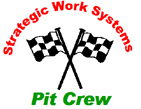A conversation overheard in a restaurant last week: “Did you hear about the ‘Auto Service Center’ here in town? No what happened? Well, dear, they closed last week. Seems that the guys who owned it finally decided to retire. You know how many years we looked for good mechanics and finally found ‘em over there on 8th and Division streets? Those mechanics were real good weren’t they? Seems like they’ve never disappointed us. They always found a problem before something fell apart, unlike the place we used to go. Their prices were fair. And the service was fast too–never had to wait on parts. They really, really knew what they were doing, didn’t they? Why, they were even ASE certified mechanics and factory-trained to work on our cars. They had the latest factory technical bulletins and recall notices and sent us notices when it was time for regular service on our cars. They treated us so well all these years; we’re going to miss them. So now where should we take our cars to be serviced?”
Their concern makes sense, doesn’t it? When you finally find a good mechanic or service center to take care of your personal car or truck, you really can tell the difference in how well your vehicle runs. It gets better mileage, the tires last longer, and major problems rarely happen. And the mechanics seem to take personal pride in their work – it shows!
Let’s ask some pointed questions: Would you take your newer car or truck to be serviced or repaired at “The Busted Knuckle Garage” where the mechanics were not trained to work on your make and model? Where they did not have the right technical information or maintenance and repair manuals? Or where their goal was to fix things fast and cheap, but accuracy and workmanship were not a priority. Where it may take three to four trips to the shop before the problem was finally fixed? Where the wait for parts could be several hours or even days? Oh, what about those greasy finger marks left on the steering wheel, the door handle and hood? We would tend to avoid this kind of service, wouldn’t we?
Unfortunately, in many manufacturing plants and facilities today, we are doing this very same thing on our most critical equipment… and expecting it to run right.
Why is it that companies can spend hundreds of millions of dollars on equipment and facilities and come up short when it comes to maintenance and training? Why do these decision makers assume that “Charlie” and “Ruth” with their years of experience in the plant can “figure things out” on the newest high-tech equipment?
OK, let’s throw another monkey wrench into this example. What if the operators were not trained on the equipment-specific requirements, settings, specifications, and setup procedures? Untrained operators cause more and more equipment problems in today’s manufacturing plants. Now, send a group of untrained maintenance folks out there to fix the problem. You guessed it: They don’t have the right tools or parts either. Now, the equipment has to run longer and harder to make up for all of the unplanned downtime. The monthly preventative maintenance tasks get deferred, for weeks, or even months. And the equipment breaks down even more. It is a vicious cycle – airplane pilots know this as a “death spiral” that you can’t pull out of. How can we possibly expect our equipment to run right and our costs to be low?
How to Avoid the “Busted Knuckle Garage” Syndrome
Focus on your most critical, most problematic, constraint equipment in the plant. Gather the equipment documentation and bulletins. Identify the skills and knowledge required to make it run right – both operations and maintenance. Train the right people in the right skills. Identify the proper operations and maintenance procedures. Train the right people to properly perform the tasks. Identify the proper PM tasks and intervals. Train the right people to perform the right PMs. Plan and schedule the PMs. Fix things that are broken, jumpered, bypassed, leaking, or worn out. Get the right spare parts in stock and keep them in serviceable condition. Document all work on the equipment in the work order system. Use the equipment repair and maintenance history to identify and address weaknesses. And when you really get down to it, look at total downtime losses. You may notice what I’ve seen for years: Maintenance can’t do it alone. More than 90 percent of the major equipment losses are outside the direct control of maintenance.
And, by the way, share the story of the Busted Knuckle Garage with your top management and executives. See where they would prefer to take their cars for service.
© 2016 Robert Williamson Strategic Work Systems, Inc.
PO Box 70 Columbus, NC 28722
(828) 894-5338
[email protected]
Download a copy of the document here: Busted Knuckle Garage
